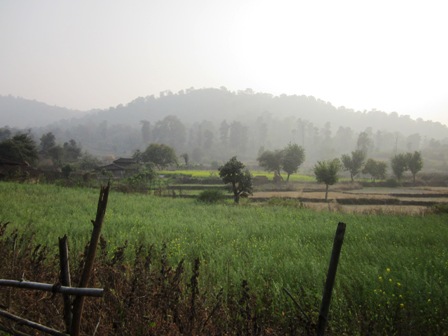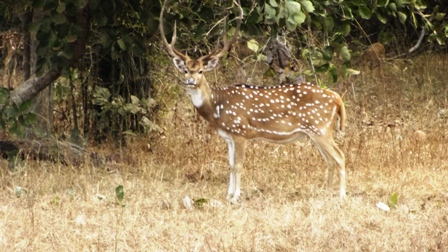Rambles in Indian Jungles I – Prosenjit Dasgupta
If you hear names like Mahuamilan, Chhipadohar, Beliakusum Ghati, or Suguasimar, you can be reasonably sure that you are somewhere near or at Palamau National Park, now a tiger reserve. These soft, sibilant titles of villages or spots in the jungle are
reflective of the gentle, but hard, life of the Munda, Oraon and Khairwar tribals, inhabitants of the great swath of forests that once stretched from Garwa where the North Koel River joins up with the mighty Son, past Netarhat and Ranchi, practically up to
Chakradharpur and Saranda. This is where in January 1972, I had my initiation into the ways of the Indian jungles.

There, in the lodge on the small hillock at Betla, where a thick iron chain blocked the way into the reserve, one could sit out in the evening on the veranda overlooking a water-hole some distance away, and be content with the braying rutting call of the
chital stag, or the last clarion call of the peafowl coming to roost after a hard day’s work in searching for food and water. If one remained quiet – and there was little alternative as one was usually the sole occupant of the lodge, and there was no TV in
the room - one would hear the deep rumbling of elephants as they came to the water-hole. Only seldom – but very seldom – deep into the night one would wake up to the squealing of a wild pig as it was caught in the plantation area some three hundred metres
from the lodge, in the jaws of a tiger.

The mornings were usually spent out in the forest walking about with the local forest beat officer as he went about supervising the work of repairing roads, having the under-brush near the road cleared (as a fire-safety precaution),or having the water-holes
cleaned up. He would point out the hoof-marks of chital, sambar and the gaur where they had dug into the earth next to a water-hole or the big, round foot-marks of an elephant group along the murram road and the occasional dung-heaps they had left behind.
We hardly spoke, in fact nobody really spoke at all, for the ears had at all times to be tuned to the sounds of the forest: the whooping of the langurs, the anxious call of a chital doe for its fawn , or, the rumbles of a passing elephant group. That was Lesson
Number One. This was linked up with Lesson Number Two: to be still if one came upon an animal around a curve in the road, be it a chital, or sambar or a gaur. So still that the animal may look over you or through you, but should not feel disturbed or alarmed.

Then there would be the “classes” on grasses and trees – here is Sorghum halpense, a grass that is favourite of sambar, and there the Dendrocalamus strictus, the thorny bamboo, a favourite of the gaur and the elephant. All this led further on, deeper in
to the jungle and deeper yet to the world of forest trees: Bombax malabaricum, Acacia catechu, Butea monosperma, Syzigium cumini, and last but not the least, Madhuca indica. Thus, a new world opened up.
And so this went on for the next thirteen years, up to 1985, sometimes once a year, sometimes twice. There was always exhilaration, a sense of repair and renewal, as one got down from the bus from Daltonganj and walked up the shallow staircase to the Betla
lodge. One left the office and work far behind and was once more lost among the “simul” trees with their crimson flowers and the “palas” trees with the reddish-yellow bracts and throngs of drongo, parakeet and mynah and the rutting bray of the chital stags
beyond the water-hole.
(The author, Prosenjit Dasgupta, has been a wildlife enthusiast for nearly fifty years. His book, “Walks in the Wild”, was published by Penguin Publishing in 2002. He has authored other books on the Sino-Indian Conflict and the Partition of India. He has
regular posts at his blog-site - http://tollykol.blogspot.com/2016)